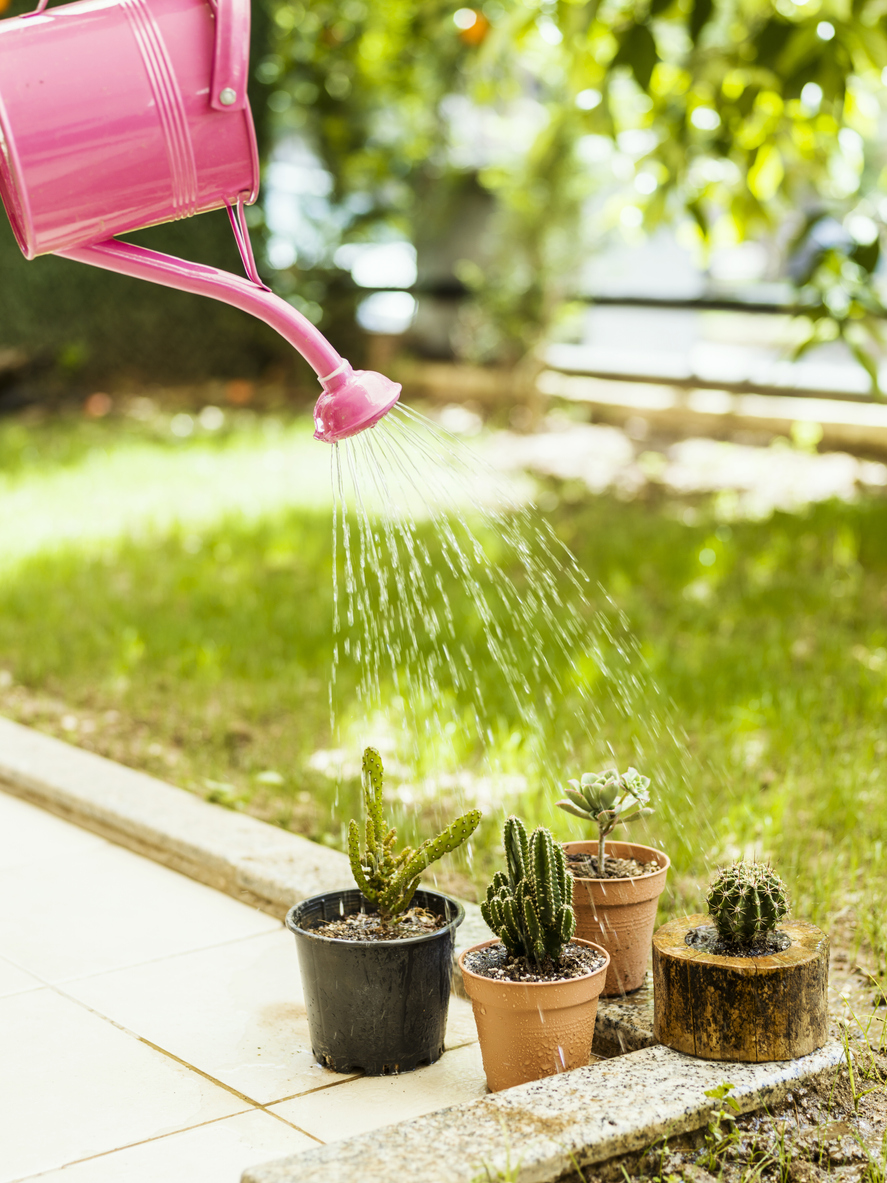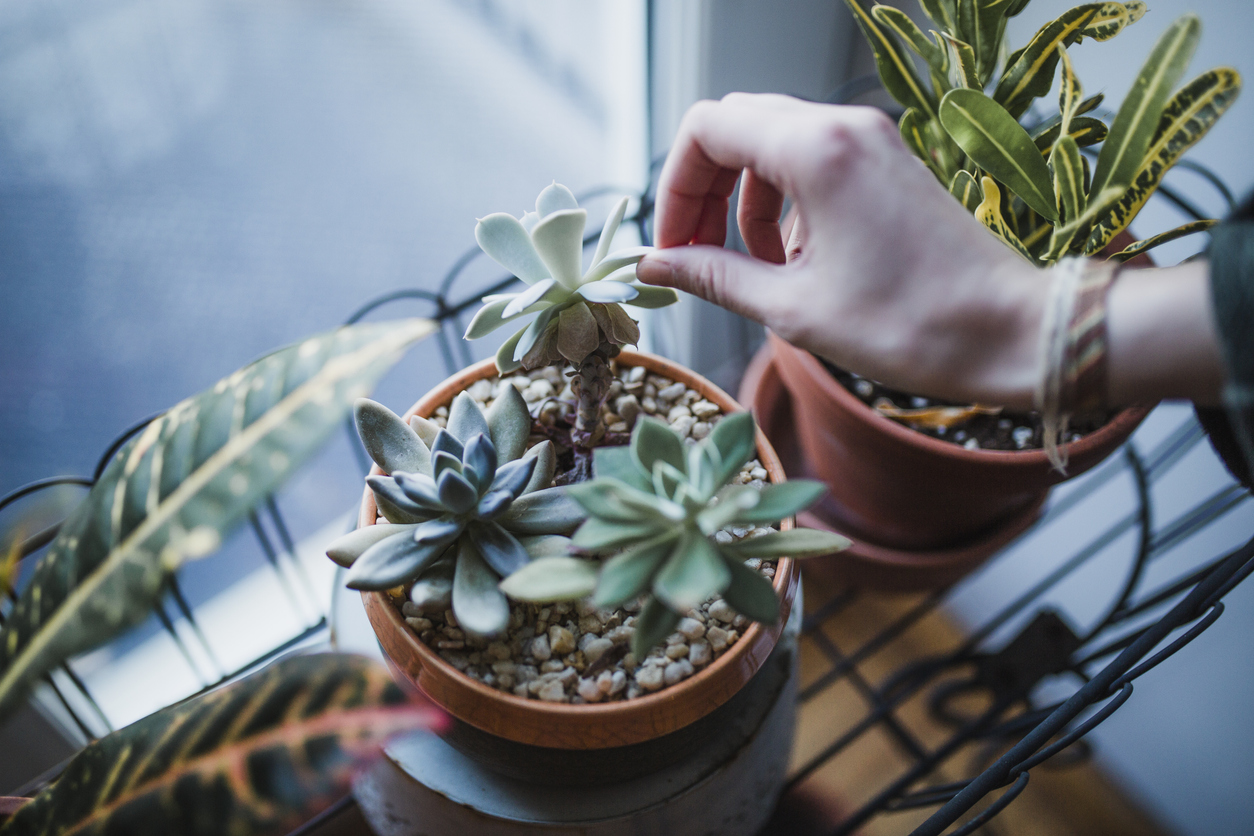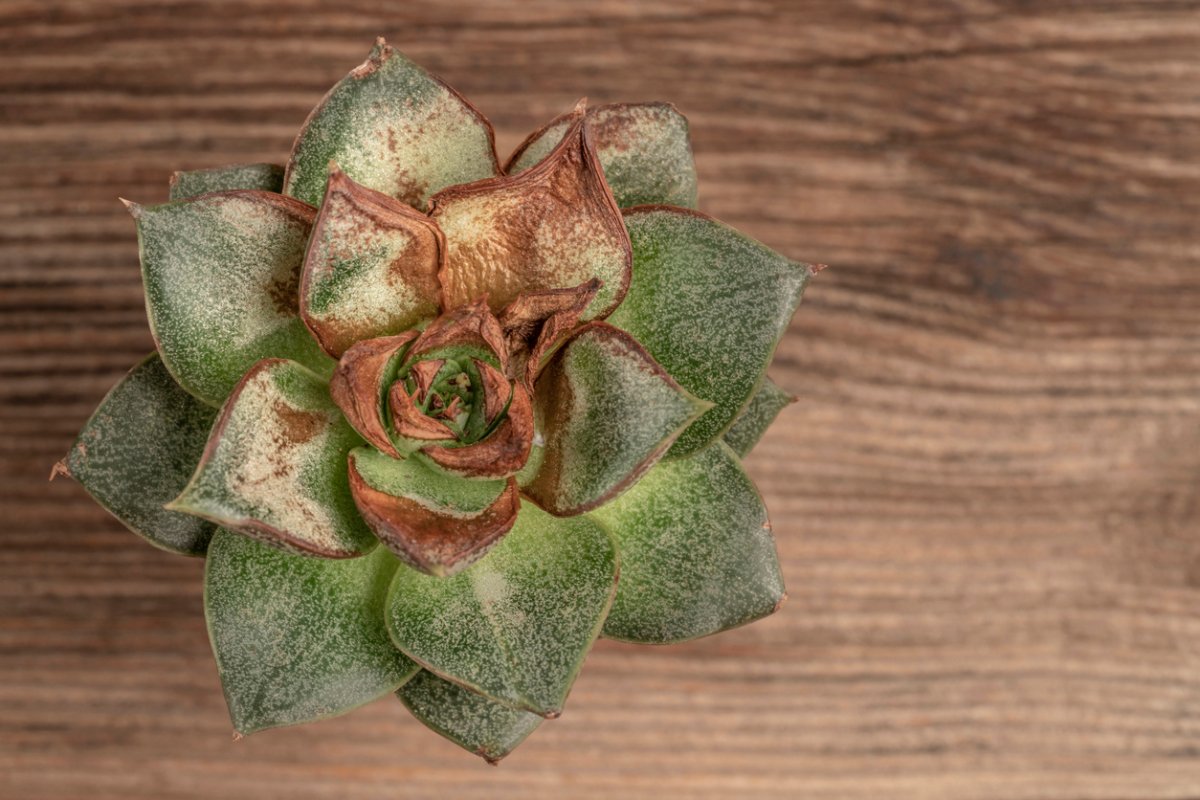We may earn revenue from the products available on this page and participate in affiliate programs. Learn More ›
Q: I thought I’d finally found a plant I couldn’t kill, but the small collection of succulents I arranged in my living room are looking pretty sickly, with the leaves falling off. What am I doing wrong—and can I bring them back to life?
A: Handsome, hardy succulents (including cacti, which have spines instead of leaves) are native to harsh, arid climates. They’re known for being easy care because they store water for use, so you only need to give them an occasional drink. Indeed, many of these popular plants—such as echeveria, with its flower-like rosettes, and full-bodied, oval-leafed jade—can withstand a good deal of neglect, remaining healthy even if you’re away for a week or two. Despite their tough-as-nails nature, however, succulents (especially those overwintered or grown exclusively indoors) are as vulnerable as other plants when their sunlight, water, soil, and warmth needs aren’t being met. So read on to learn why your succulents are dying, how to decode their various symptoms, and ways to restore their robust beauty.
RELATED: 11 Signs of an Unhappy Houseplant (and How You Can Help)
Succulents with squishy, transparent leaves are showing signs of overwatering.
The camels of the plant world, succulents store water in their thick, fleshy leaves—and too much water can actually kill them. Succulents can absorb only so much before they begin to explode, resulting in squishy, transparent leaves that may fall off when lightly touched. If the entire plant has succumbed to overwatering, it’s probably a lost cause, but if just a few leaves show symptoms, follow these steps:

- Remove the plant from its container by tipping it upside down into your hand. If necessary, gently manipulate the soil before the root ball releases from the container. Place the root ball on a towel or layer of newspaper to absorb excess water (change the towel/paper as it becomes saturated). Allow soil and root ball to dry until no longer damp (this can take several days).
- Meanwhile, detach all rotting leaves with your finger; many release easily from the main stem with just a little nudge.
- When soil and roots are no longer damp, make sure the pot you’re using has a drainage hole (more on inadequate drainage below). Then gently place the succulent in the container, adding more soil if necessary around the edges. Allow about an inch of space between the soil surface and the lip of the pot.
- Water the soil (not the leaves, which can cause rot) thoroughly. Before watering again, and in the future, stick your finger into the top inch of soil. If it feels dry, water until water runs out through the drainage hole at the bottom of the pot.
Watering frequency will differ from climate to climate and vary even more based on the heat and humidity in your home. What’s more, water needs change from season to season. During the winter when plants are dormant and the sunlight is less intense, you may only need to water once a month. As plants come out of dormancy and light increases in the spring, so too will watering frequency.
Under-watered succulents develop shriveled leaves.
To conserve resources, the leaves of under-watered succulents lose their luster, becoming dull and shriveled. You may find dead, dried leaves at the bottom of the plant, progressing to the top as water deprivation becomes more severe. Fortunately, mildly shriveled succulents respond quickly to watering.
One caveat: Parched soil tends to drain quickly before roots have a chance to absorb water. So water the soil until the water drains out of the bottom on the pot, then water again. Repeat until draining slows and the soil starts to absorb water. Check the soil weekly with the finger test to determine if it’s thirsty.
The wrong soil can drown succulent.
Succulents thrive in sandy, fast-draining soil. If yours are planted in another type of soil, such as a general potting soil with water-retaining properties, the roots won’t have the opportunity to dry out sufficiently between waterings. Such a plant will develop squishy, transparent leaves, much like those found in overwatered succulents. If only a few leaves show signs of poor drainage, repot the plant in a potting mix specifically for cactus and succulents and only water it when a finger test determines the soil is dry.
You can make your own succulent potting mix.
While ready-made potting mix for succulents is available at garden centers, you can DIY a batch with this simple recipe: Combine three parts potting soil, two parts coarse sand, and one part perlite (a lightweight organic soil amendment). Avoid potting soils containing vermiculite or other moisture-retaining ingredients, and don’t use beach or sandbox sand.
Poor drainage can also swamp succulents.
If your succulents’ container doesn’t have a hole in the bottom, water won’t be able to drain and the plants are bound to rot. Chief symptom? Those squishy, see-through leaves again. Trouble is, succulents are often sold in a nursery pot (with a drainage hole) inside a decorative cachepot that lacks drainage. So watering a succulent inside a cache pot is like drowning it in a bathtub! When it’s time to water, remove the nursery pot containing the succulent from the cache pot and water thoroughly until water runs through the hole.
Bound roots can prevent proper drainage.
When a succulent is in need of slightly bigger accommodations, it can become root bound—struggling with a root system so extensive it circles the exterior of the root ball. This can clog a pot’s drainage hole, preventing water from coming through. To confirm this condition, gently turn the pot upside down, allowing the plant to fall into your hand. If the roots are circling tightly around the perimeter of the soil, transplant into a slightly larger container. As a rule, succulents do like snug growing conditions so choose a pot no more than an inch wider than the plant at its widest spot.

Succulents will stretch or lean towards the light.
The more light you provide, the happier your succulents will be. Without enough bright, direct light, these sun-loving plants will lean or stretch toward the light source, a process known as etiolation. It can make succulents rather gangly-looking but won’t harm them, and normal growth will resume once the light improves. Rotating succulents by a quarter turn each week so that all sides are exposed to direct sunlight, may prevent future etiolation.
If you don’t like the look of an etiolated succulent, such as an echeveria, try this technique to start a new one. Remove the top rosette from the plant, cutting about an inch below it with a sharp knife. Allow the rosette to callous over for a few days, then set it on top of a container of moistened succulent soil in a bright window. With time, it will take root and grow.
Insects can suck the life out of succulents.
Healthy succulents rarely develop pest problems, but weakened plants are easy targets. Low lighting, overwatering or under-watering, and poor drainage each increase the likelihood that mealybugs will take up residence. These fuzzy white insects attach to leaves and hide in crevices where they suck nutrients from the plant. Mealybugs can go unnoticed until their numbers increase and they get bigger, in which case it might be best to discard the plant. If you spy just a few of the pests, quarantine the plant away from other houseplants in a bright window. Dip a cotton swab in rubbing alcohol and apply it to each bug to kill it by instantly dissolving the exoskeleton. Continue to monitor the succulent for several weeks, repeating the alcohol treatment as necessary, before returning it to safely sit among your other plants.

